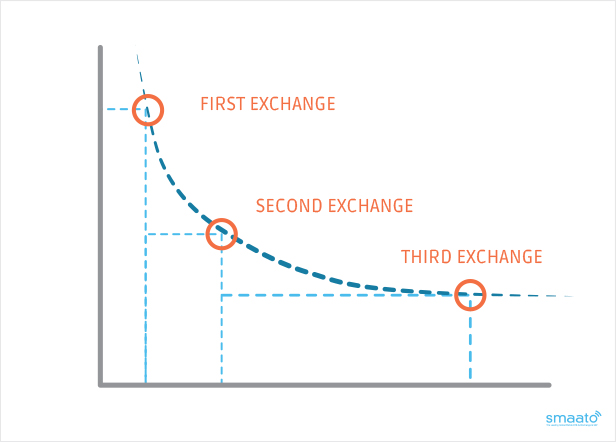This sponsored post is produced by Smaato.
One of the biggest problems within ad tech is our almost unconscious love of making the simple complicated. If we can make a concept (not the solution, just the concept) appear really complicated, our eventual half-solutions appear really smart, thereby assuring that publishers and advertisers will remain convinced they still need us around.
Which, truth be told, they probably do. No publisher or advertiser wants to hire a room full of engineers to figure this stuff out. In fact, much of what we do is fairly complicated. Whenever I explain RTB (real-time bidding) to a non-industry person, they either visibly stop paying attention or can’t really believe it when I get to the end of my greatly simplified story.
Yet, as an industry, one of the things we have grappled with consistently over the years, and have done a fairly poor job of fixing, is the dreaded waterfall. It’s he notion that for any available ad impression, there is some stack of demand somewhere that sequentially considers buying it.
True, RTB is not sequential at all. However, in most cases, RTB has become a supply of demand that sits below direct deals and (maybe) Private Marketplace, while sitting above ad networks. The real culprit here is, frankly, habit, and the fact that while corners of the Lumascape have grown exponentially, the boring middle piece, the most important piece — the Ad Server — has pretty much just sat there and allowed stuff to be bolted on to it along the way.
It’s that bolting-on part that created the waterfall in the first place. “Where do you sit in the waterfall?” “If I could only get above x in your waterfall, you’ll see that we really perform”. “Oh, you should definitely slot those guys in at the bottom, since they only mop up the floor”. “Can you make my direct sold stuff compete with y?”
All this occurs because the ad server has to know how to choose something to serve, and its capacity to do so usually comes from a Frankenstein arrangement of connected demand, some of which hops in and out of the ad server’s universe to do so.
In mobile specifically, pure RTB works great, technically speaking. Why? Server-side ad calls. Get two systems talking to each other over a common language at the server level; it’s lovely. But of course, with the necessary acknowledgement of unicorn outliers, almost any publisher or app pulling in significant ad revenue didn’t start doing this yesterday. So they probably have a legacy system or two (that may or may not have started in display); some salespeople on the street who are intensely worried about their commission; a connected SSP or three; various resellers, exchanges, seven legacy ad networks, some private deals; and house ads that the marketing folks are pretty sure are the most important thing in the world. And bravo: we’re back to the waterfall, or a series of them.
Recently, the industry bit hard on the concept of “header bidding” (not sure where you were in 2012?) as a way to make Those Guys works a lot harder. It works to some degree in display. Yet it’s still a way to game the waterfall, rather than throwing it away — and for those of us who concentrate on mobile, it completely ignores the app ecosystem, and isn’t really relevant to the mobile web, considering the 300-600 milliseconds it adds to your ad call each time. Yuck.
What’s the solution? Dynamic Demand. It’s something we developed with the Smaato Publisher Platform, aka SPX, released earlier this year. It connects 400+ demand sources to the platform, plus whatever a publisher brings with them. Dynamic Demand means that within the platform, there really and truly is no waterfall. Publishers create line items for their direct sold guaranteed inventory, first-look Private Deals, curated Private Auctions, the open RTB market, ad network mediation (ours or yours), and/or house ads. They’re all going to compete, in real time, on a level playing field. Mix and match, adjust price and priority as you wish, and the platform responds accordingly. Or leave everything at the same priority, and let Dynamic Demand deliver the most valuable impression each time.
As the world moves away from display and toward mobile, and proves itself to be an app-driven economy, there’s — as they say — no time to wait around. It’s time to unbolt ad revenue from legacy systems and bad habits. The reasons that ensured that the waterfall was grudgingly invented also means that we can’t flip a switch and turn it off in an instant, but there are better ways, ways that were built with mobile and programmatic in mind from the start — and where the waterfall is really and truly dead.
Garrett McGrath is VP of Product Strategy at Smaato.
Sponsored posts are content that has been produced by a company that is either paying for the post or has a business relationship with VentureBeat, and they’re always clearly marked. The content of news stories produced by our editorial team is never influenced by advertisers or sponsors in any way. For more information, contact sales@venturebeat.com.

